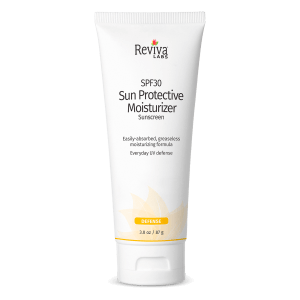Skin Care
Protect your skin from the sun this summer – and all year ‘round
By now, we all know the dangers of too much sun exposure. The sun’s ultraviolet (UV) rays break down the skin’s elastin, which can cause skin to wrinkle and sag. Elastin loss weakens the skin in general, meaning skin can bruise and tear more easily, and those wounds may take longer to heal.
But of course, in addition to the wrinkles and dark spots UV rays can cause, the real danger from sun exposure is skin cancer. Skin cancer is the most prevalent form of cancer in the U.S., but it’s also the most preventable.
What does sun exposure do to the skin?
Exposure to the sun can cause:
- Wrinkles and sagging skin, caused by the damage to the elastin and collagen that keeps the skin strong and supple.
- Skin discoloration (freckles, brown spots, sallowness (yellowing of the skin), or other hyper pigmentation.
- Damage to the skin’s immune function, leading to tumors, pre-cancerous skin lesions, and skin cancer (basal cell carcinoma, squamous cell carcinoma and melanoma).
Sunscreen is crucial
Of course, we know that applying sunscreen is one of the most important things we can do to protect our skin. But we also now know that sunscreen needs to be applied all year ‘round, liberally, early, and often.
When using a chemical sunscreen, it should be applied 30 minutes prior to sun exposure; barrier sunscreens may be applied immediately before sun exposure.
You need to make sure that you apply enough sunscreen for adequate coverage. Enough to fill a shot glass should cover you. And that same amount should be used when you reapply every two hours. If you’re sweating, you will want to reapply more frequently. And if you’re swimming or splashing around, you want to reapply each time you come out of the water.
And even on the grayest, coldest of days, you should still apply sunscreen to any exposed skin.
Other ways you can protect your skin from the sun
- Limit sun exposure between 10:00 AM and 4:00 PM, when the sun’s rays are the most intense.
- Remember that water, snow, and sand actually reflect the sun’s rays. So when you’re on the beach or on a boat – or even on a ski slope, your risk of sunburn is increased.
- To keep your eyes – and the delicate area around your eyes – safe, wear sunglasses with 99% – 100% UV absorption.
- Pay attention to your medications. Many medications (both topical and ingested) can make you more sensitive to the sun. Read your labels and take extra precautions.
- Cover up when you can. You clothing can provide an important first line of defense against sun damage. Long sleeves, long pants, hats, and tightly woven fabrics can help protect your skin. There are also many options for clothing and swimwear with special sun-protective materials.
- NEVER use sun lamps or tanning beds – they’re simply giving you a high dose of UV radiation that can damage your skin.
- Mineral makeups and other skin care products often boast extra sun protection. By all means, add them to your sun protection routine, but be sure you’re taking other precautions as well.
Sun protection is vital, and no one product or action can give you complete protection from the sun. Buy a high-quality sunscreen with an SPF of 15 or higher; make sure it offers broad-spectrum protection; and use it correctly (in sufficient amounts, and according to directions). But remember, sunscreen is just one vital part of a complete sun protection program. Be smart about your exposure to the sun.








